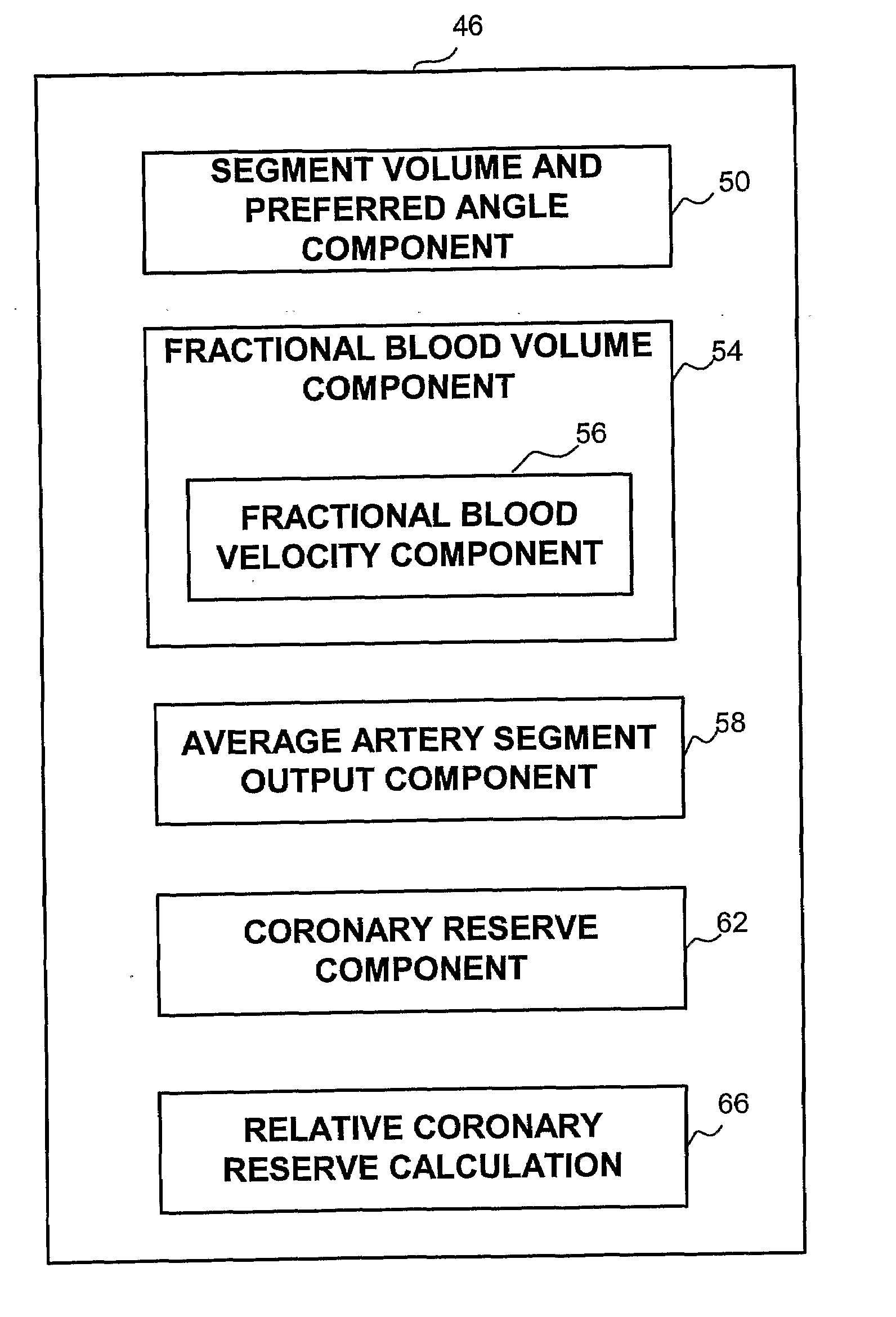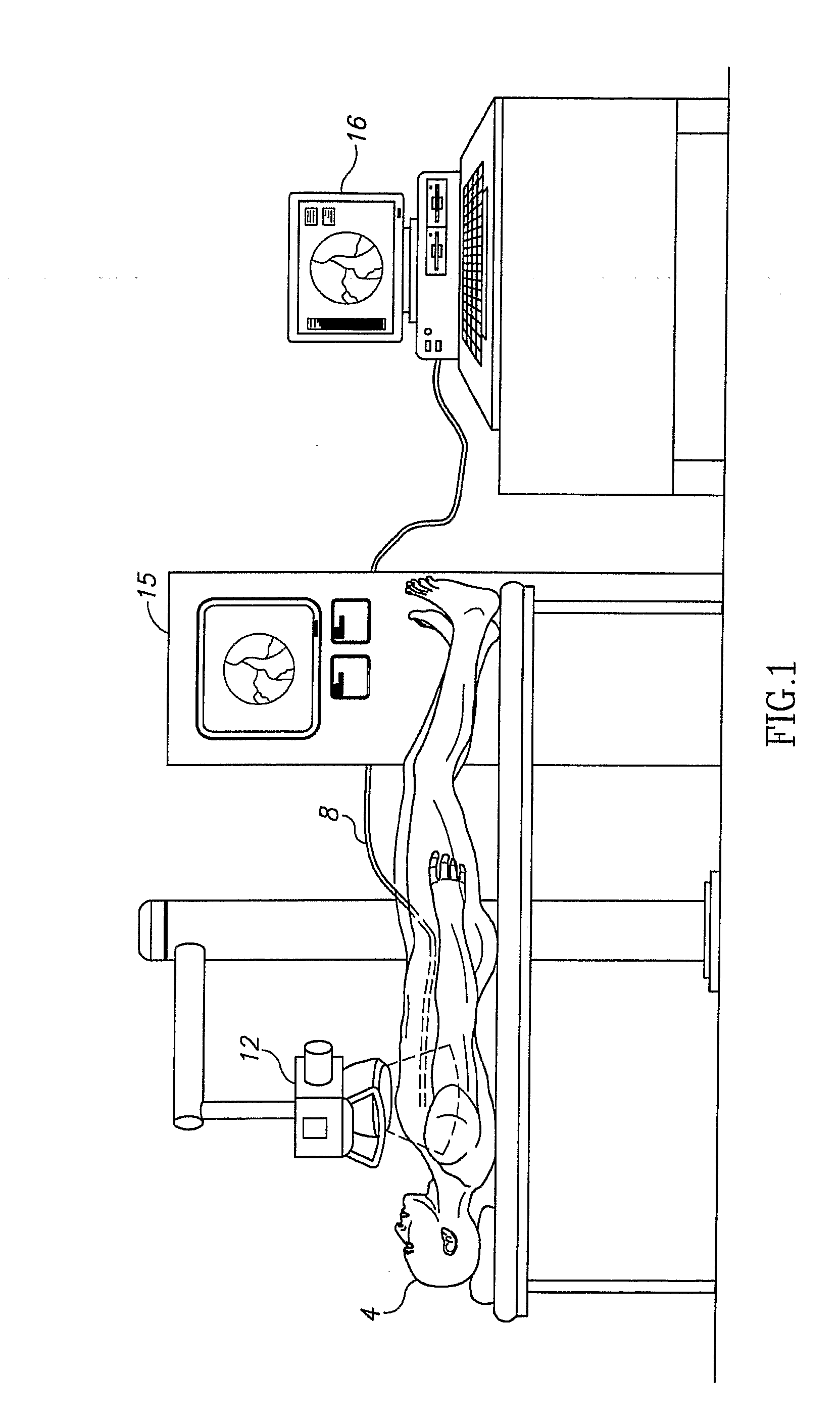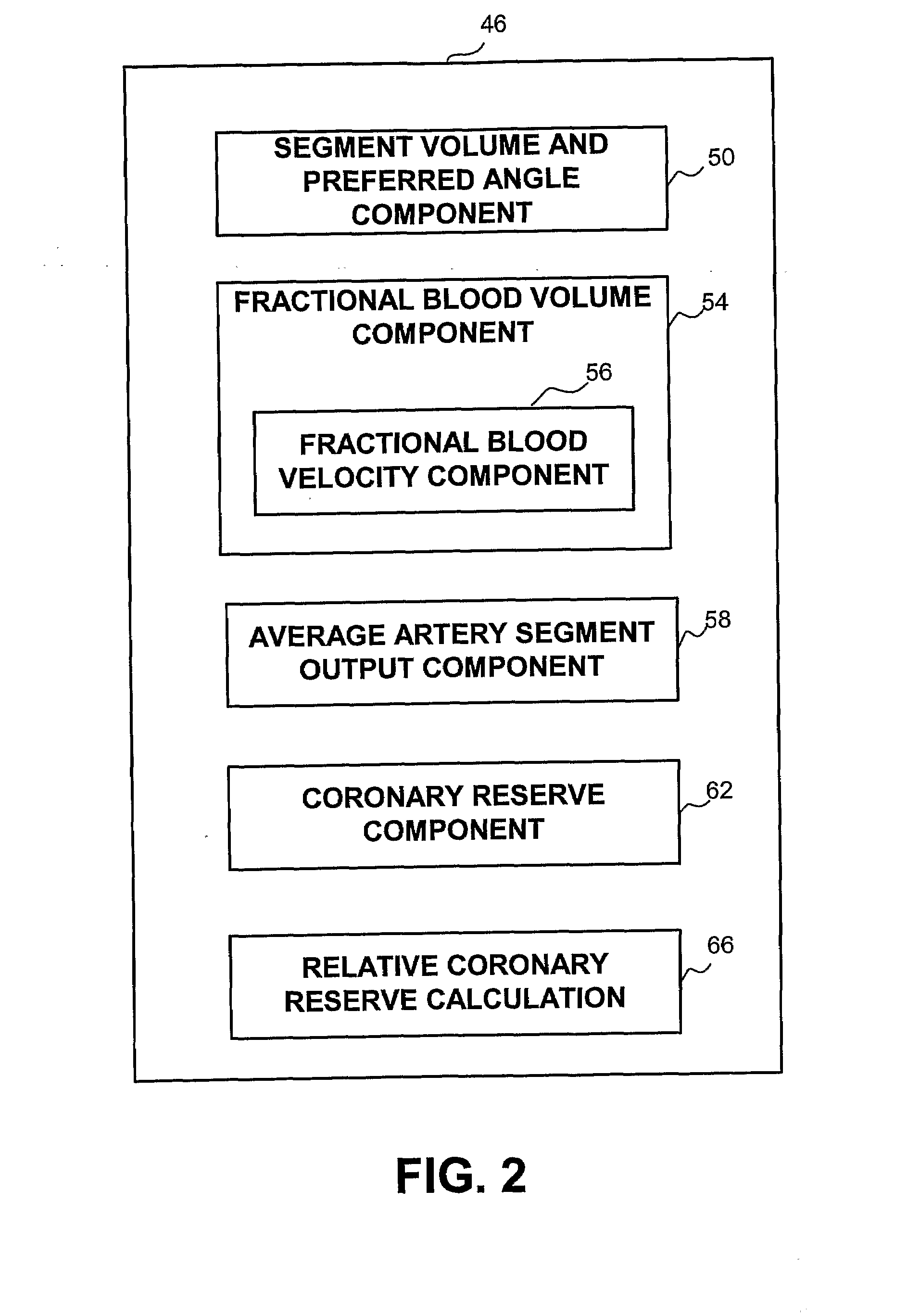Method And Apparatus For Blood Vessel Parameter Determinations
a blood vessel and parameter determination technology, applied in the field of blood flow diagnosis, can solve the problems of affecting the measurement flow, affecting the measurement accuracy, and requiring more equipment, so as to achieve the effect of improving the accuracy of blood flow measurement, and reducing the cost of mr method
- Summary
- Abstract
- Description
- Claims
- Application Information
AI Technical Summary
Benefits of technology
Problems solved by technology
Method used
Image
Examples
Embodiment Construction
[0029]A new and novel apparatus and method for the determination of coronary reserve and relative coronary reserve and other flow related measurements of a specific coronary artery is disclosed. The proposed method and apparatus first determines the 3D model, including the volume of a fixed segment of an artery at multiple points of time throughout a heart beat cycle. Alternatively, the method uses extrapolation of the 3D model, including the associated volumes from one time segment to another. In yet another alternative, the 3D model and is volumes are received from another source, such as CardiOp by Paieon of Rosh Ha'ayin, Israel. Then, using a contrast agent injected to the subject, the apparatus measures the rate at which the injected material fills the segment of the artery examined. The filling rate and the volume of the segment of the artery examined at the same point in time relatively to the heart beat cycle are used to determine the velocity of the blood flow at that point...
PUM
 Login to View More
Login to View More Abstract
Description
Claims
Application Information
 Login to View More
Login to View More - R&D
- Intellectual Property
- Life Sciences
- Materials
- Tech Scout
- Unparalleled Data Quality
- Higher Quality Content
- 60% Fewer Hallucinations
Browse by: Latest US Patents, China's latest patents, Technical Efficacy Thesaurus, Application Domain, Technology Topic, Popular Technical Reports.
© 2025 PatSnap. All rights reserved.Legal|Privacy policy|Modern Slavery Act Transparency Statement|Sitemap|About US| Contact US: help@patsnap.com



